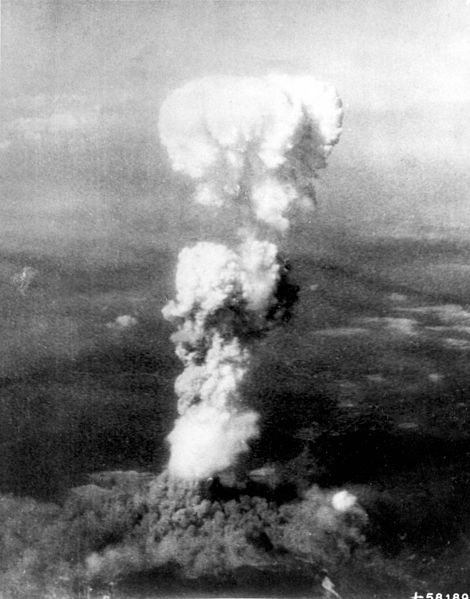The Atomic Heritage Foundation (AHF) has published new articles in recognition of the 71st anniversary of the atomic bombings of Hiroshima and Nagasaki in World War II. These articles were also prompted by President Obama’s visit to Hiroshima on May 27, 2016, which generated considerable interest.
The new articles include a detailed timeline of the bombings, an analysis of Leo Szilard’s efforts to urge a demonstration of the bomb, and others on the continued controversy over the extent to which the use of the atomic bombs precipitated Japan’s decision to surrender.
The Atomic Heritage Foundation’s website, with 90,000 hits per month, is considered one of the premier websites on Manhattan Project history and is often used by students and scholars for research. The new articles provide greater historical context for considering the bombings of Hiroshima and Nagasaki and evaluating their role in bringing about Japan’s surrender. AHF’s goal is to present factual information and analysis from multiple perspectives, encouraging readers to draw their own conclusions.
The timeline of the atomic bombings begins on July 16, 1945, with the successful Trinity test. The same day, Little Boy bomb units, accompanied by the uranium-235 projectile, were shipped out of San Francisco on the ill-fated USS Indianapolis for Tinian Island. The timeline follows the buildup to the use of the bomb, what the B-29 plane crews were doing during the missions, and the immediate impact of the bombings on Hiroshima and Nagasaki. Interwoven in the timeline are quotations from the men who participated on the missions and excerpts from military records. At 0730 Tinian time, Col. Paul Tibbets, pilot of the Enola Gay, announced to his crew, “We are carrying the world’s first atomic bomb.”
“Bombings of Hiroshima and Nagasaki” uses testimony from the crews who watched the mushroom cloud rise and from hibakusha (Japanese survivors of the bombings) who recount the unbearable heat, fires and widespread destruction. Japanese survivor Tatsuichiro Akizuki recalled: “All the buildings I could see were on fire… It seemed as if the earth itself emitted fire and smoke, flames that writhed up and erupted from underground… It seemed like the end of the world.”
Historians continue to debate whether dropping the atomic bombs on Japan directly led to the Japanese decision to surrender. As discussed in “Leo Szilard’s Fight to Stop the Bomb,” some Manhattan Project scientists advocated for the United States to demonstrate the bomb before using it on Japan, but their petition was suppressed.
“Debate over the Japanese Surrender” presents the still heated debate between traditionalist and revisionist historians over the extent to which the atomic bombings contributed to Japan’s decision to surrender. Traditionalists believe that the atomic bombs were necessary in bringing an end to the war. Revisionists argue the imminent Soviet invasion of Japan, Japan’s dwindling supplies, and internal political divisions would have led to Japan’s surrender without dropping the bombs.
Another article, “Hiroshima and Nagasaki Missions – Planes and Crews,” lists each crew and plane and their role in the atomic bombing missions. Many of the crews swapped planes for the missions, often leading to confusing or erroneous information about which crews or planes participated in each mission. This list should become the definitive online account of the 509th Composite Group crews and planes on Tinian and their roles in the atomic bombings.
Other recently published articles on related topics include pieces on Project Alberta, the USS Indianapolis, the July 1945 Potsdam Conference and Declaration, and Emperor Hirohito. These articles cover other aspects of the atomic bombing missions and the mindset of American and Japanese leaders at the time.
AHF has also published key primary and secondary sources on the missions and the bombings. Two unique documents include Capt. William “Deak” Parsons’s checklist for loading the gunpowder and detonator charges into Little Boy in the air aboard the Enola Gay, and Dutch Van Kirk’s navigation log from the Hiroshima mission. In another document, Yoshito Matsushige, who captured some of the only photographs of Hiroshima immediately after the bombing, recounts the terrible things he witnessed that day. “Even today, I clearly remember how the view finder was clouded over with my tears.”
The Atomic Heritage Foundation is seeking funds to produce a “Ranger in Your Pocket” program on the bombings. Audio/visual vignettes will feature interviews with members of the 509th Composite Group who flew the missions, testimony from hibakusha, documentary footage and photographs, and interviews with historians and nuclear experts today.
AHF is very grateful to Clay Perkins, Darrell Dvorak, Joseph Papalia, and David Wargowski for their help with and support of this project.





